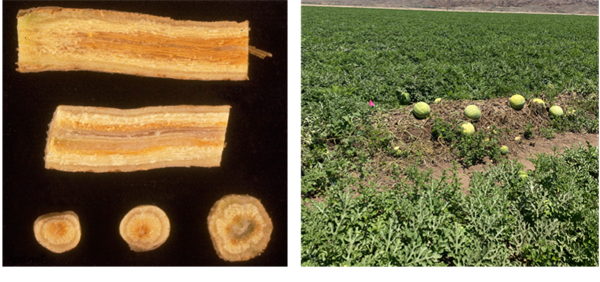Feb 19, 2020
Alternatives to Glyphosate for Use Around Fields
Glyphosate has long been a popular product for non-selective weed control around fields. It is an effective treatment and the regulations for this use are reasonable. There has been much public concern in recent years, however, about the safety of this herbicide to human health. Some countries and U.S. municipalities now have strict regulations for Glyphosate use. Whether they are warrened or not, these concerns have caused growers to look for alternatives.
Glyphosate is popular for use around fields because it is 1) broad spectrum and will kill both grasses and broadleaf weeds, 2) is not active in the soil and will not wash into fields, 3) is not volatile and with not lift off and move into fields and 4) is affordable even in low value crops.
We evaluated 15 herbicides this season to determine how well they would fit these criteria. These included herbicides that used 5 different modes of action to kill weeds. The trials were conducted between October and December this year at the Yuma Agriculture Center. The herbicides that were tested and their mode of action are listed in the table below.

Weed Control
The weeds that were present in these trials were nettleleaf goosefoot, lambsquarters, common purslane, summer annual grasses and winter annual grasses. The following graph illustrates the levels of control we achieved with these weeds compared to Glyphosate.

There were only 3 of the tested products that controlled all of these weeds as well as Glyphosate (arrows). These were Paraquat (Gramoxone), Salflufenacil (Sharpen) and Glufosinate (Liberty,Rely). Several of the others were good on broadleaves but weak on grasses. This could be overcome by combining them with a grass herbicide.
Soil Residual
One of the characteristics of Glyphosate that make it so popular is that it does not stay around in the soil except in very rare situations. Soil gets moved around with equipment,wind and water and soil activity can be a negative even on field edges. Soil residual herbicides are commonly used here but most have fairly short activity. We planted wheat, lettuce, broccoli and spinach into plots that we had treated with the 15 herbicides we evaluated. Four of them injured at least one of the crops. These were 2,4-D choline (Embed), Dicamba (Enginia), Sujlfentrazone+Carfentrazone (Zeus) Carfentrazone (Aim,Shark).
In terms of broad spectrum weed control with no soil activity, only two of the fifteen herbicides we evaluated were comparable to Glyohosate. It is likely that a combination of a grass and broadleaf herbicides will be necessary.

To contact Marco Pena go to:
marcop@ag.arizona.edu










